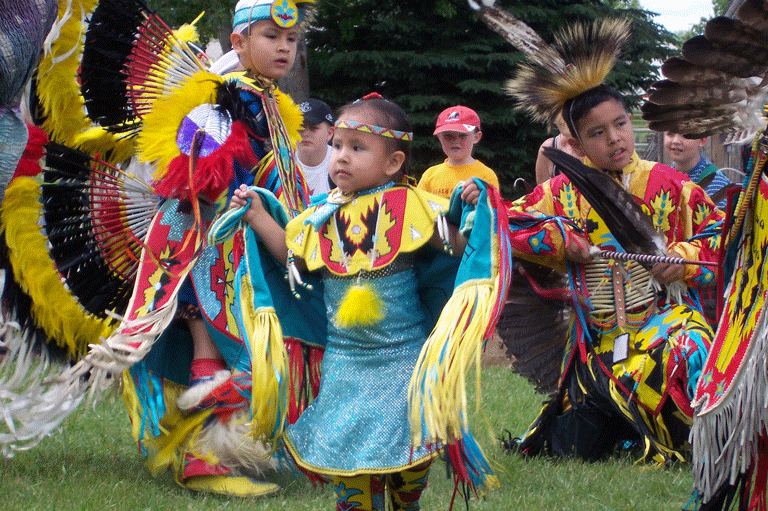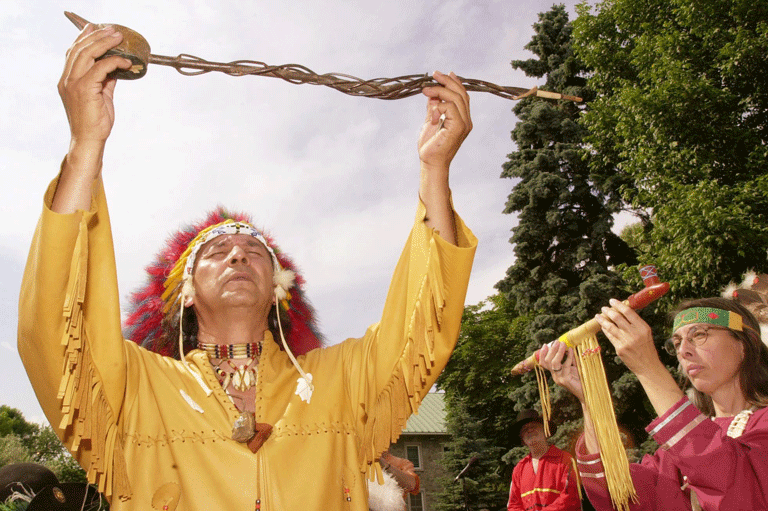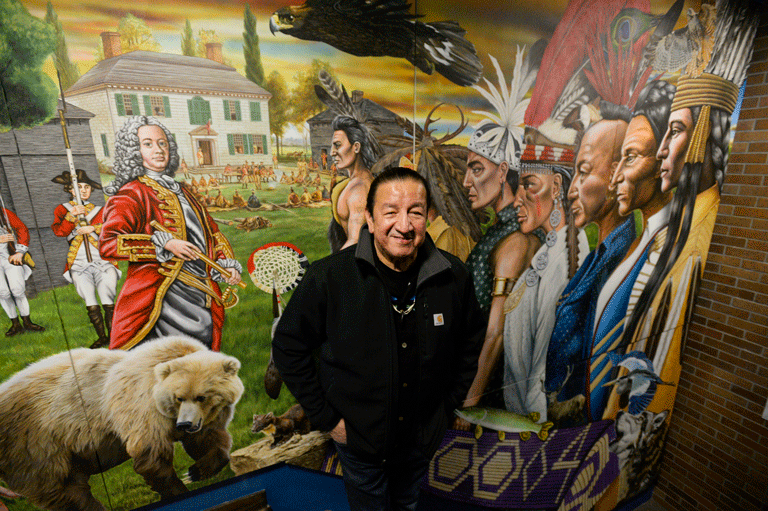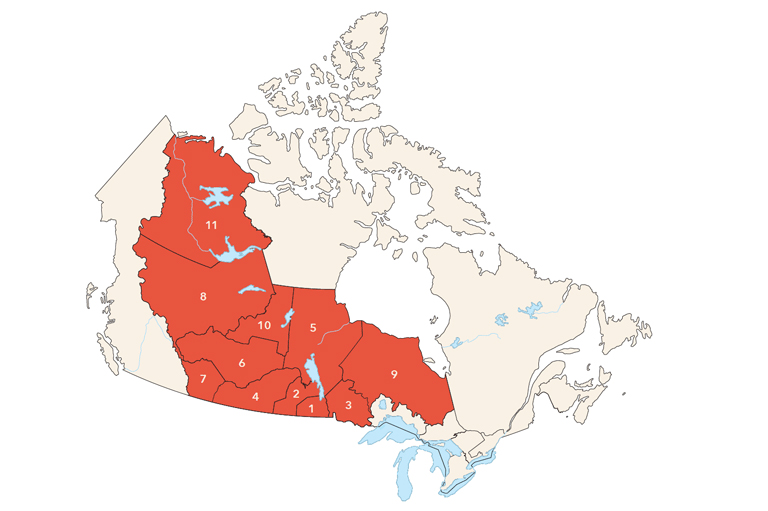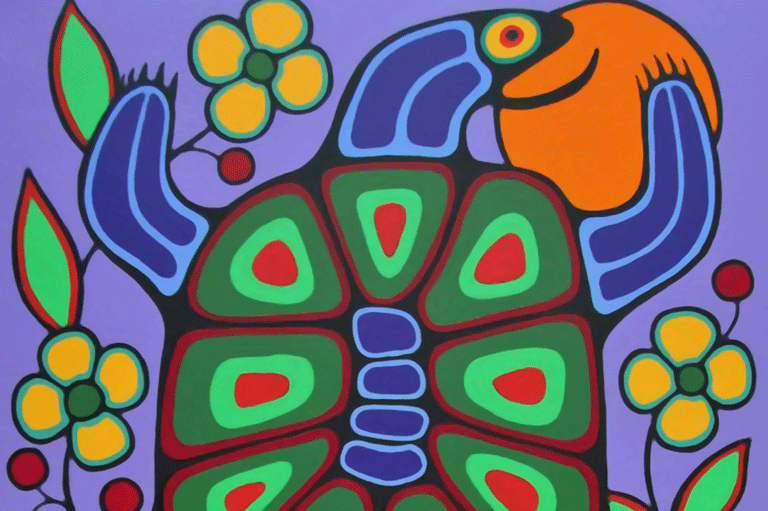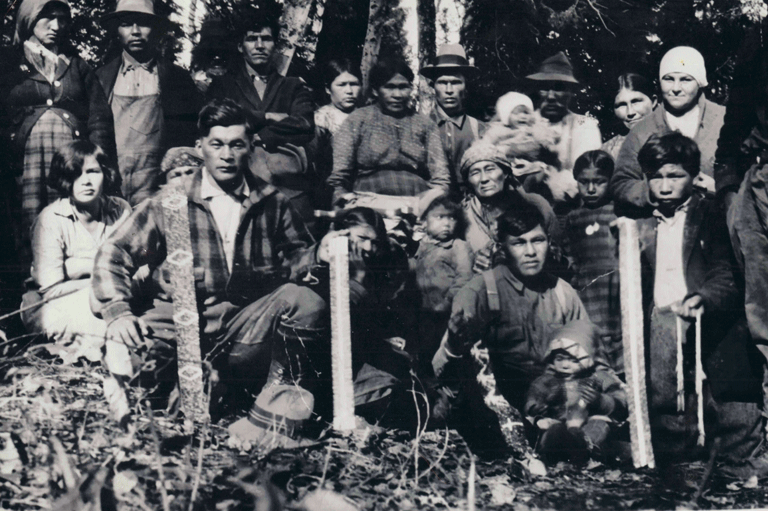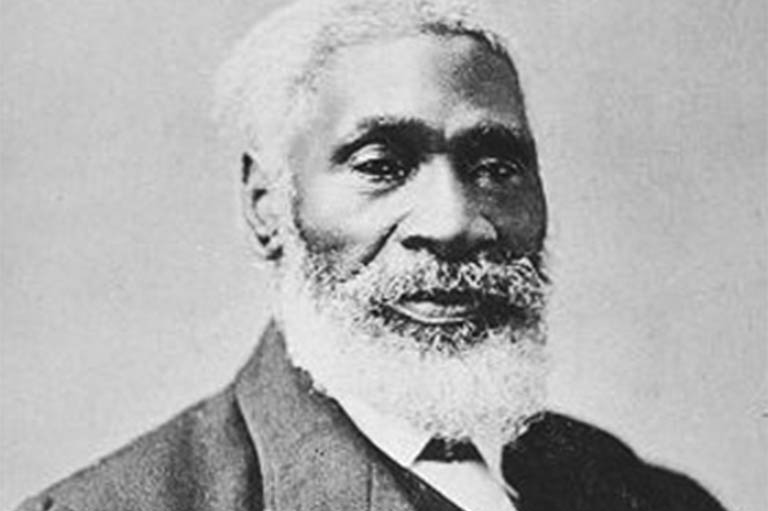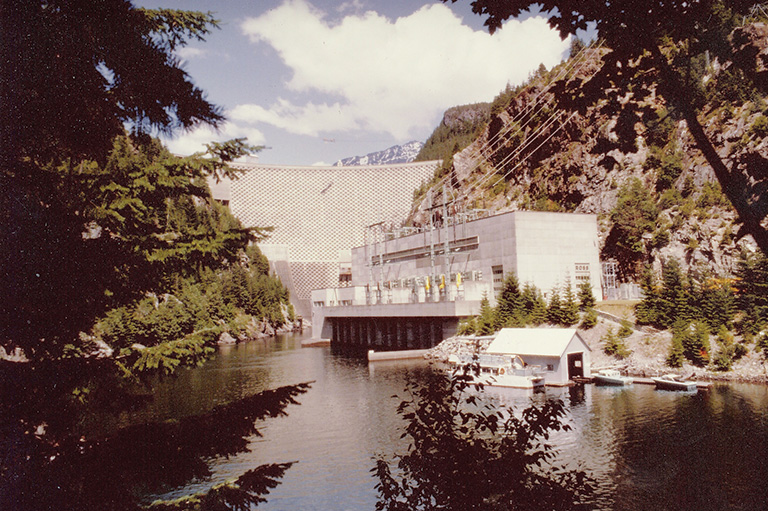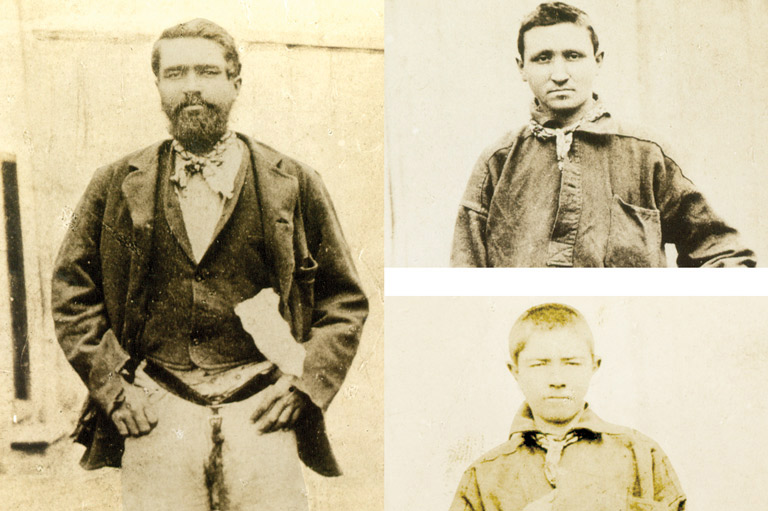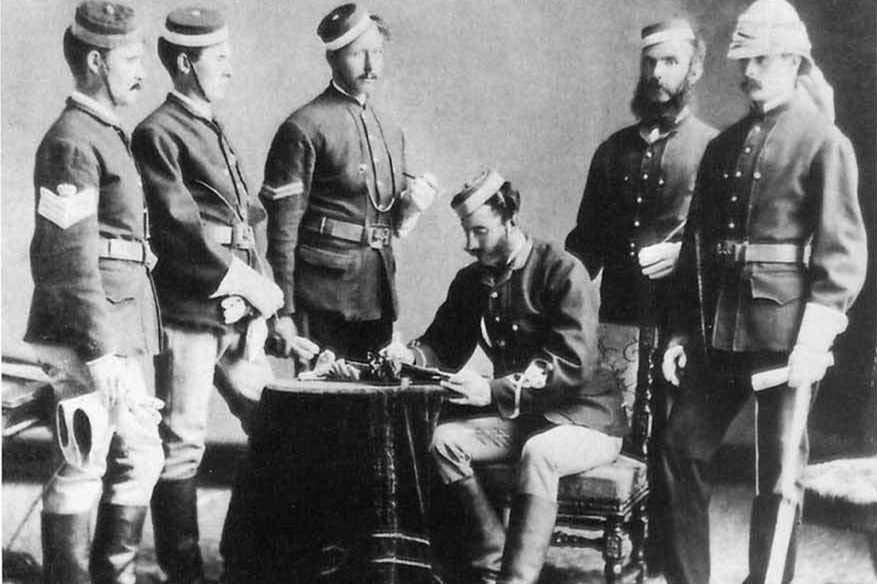Nations in Waiting
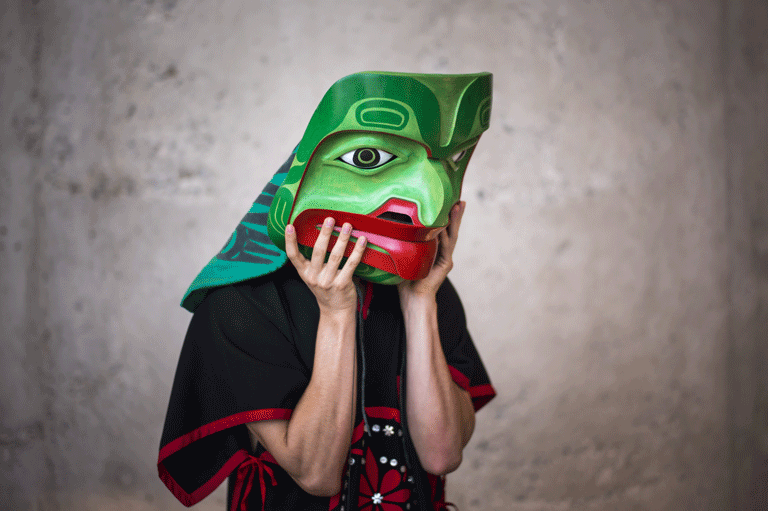
Dancer Nigel Grenier of Gitxsan First Nation wears a traditional mask at a performance in Vancouver in 2015. Grenier is the lead dancer of Dancers of Damelahamid, an Indigenous dance company that performs dances and songs that were for years banned by the federal government in an effort to force the assimilation of First Nations peoples.
The 1997 Supreme Court of Canada decision known as the Delgamuukw case was widely seen as a turning point for Treaty negotiations in British Columbia, according to the BC Treaty Commission. The court declared that Aboriginal title in British Columbia had not been extinguished by the government of the colony of British Columbia before it joined Confederation in 1871.
The Delgamuukw case — named after Earl Muldoe Delgamuukw, a Gitxsan man and one of the claimants — also set out a three-step test to prove Aboriginal title.
Title would be based on sufficient, continuous, and exclusive occupation by a First Nation prior to 1846, the year Britain asserted sovereignty over British Columbia. Thus, a First Nation must prove its Aboriginal title before the courts, as the Tsilhqot’in Nation successfully did in 2014.
However, the Tsilhqot’in Nation spent millions of dollars over twenty years in pursuit of its title; many First Nations do not have the resources or the inclination to follow this route. The alternative is to negotiate Treaties with the governments of Canada and British Columbia.
Historically, as per the Royal Proclamation of 1763, the British Crown acknowledged Aboriginal title and negotiated Treaties with First Nations in eastern Canada and parts of the West. However, the fourteen agreements known as the Douglas Treaties, signed between 1850 and 1854 on Vancouver Island, and Treaty 8, signed in 1899 in northeastern British Columbia, remained the only B.C. Treaties until the 1998 Nisga’a Final Agreement.
This article explores the background to this unique situation and provides a brief summary of the current British Columbia Treaty process.
After the border between the United States of America and British North America was established west of the Rocky Mountains in 1846, the British Crown was anxious to stop American expansion into the new territory by encouraging British settlement.
Historian John Galbraith, in his book The Hudson’s Bay Company as an Imperial Factor, 1821-1869, notes the writings of Colonial Secretary Lord Grey: “Looking to the encroaching spirit of the U.S. I think it is of importance to strengthen the British hold upon the territory now assigned to us by encouraging the settlement upon it of British subjects.”
In 1849, the colony of Vancouver Island was established by the British Crown. The Hudson’s Bay Company (HBC), which had already established Fort Victoria, was granted land and trading rights for ten years by the British Crown. HBC then had to create a colony of British settlers within five years, or the grant would have been forfeited.
According to the Colonial Office’s “Confidential Report on Vancouver Island, 1848,” HBC’s offer to colonize the island was chosen over three other rival proposals because of HBC’s superior financial resources and its experience with First Nations on the island.
James Douglas, an HBC chief factor who became governor of Vancouver Island in 1851, negotiated agreements that, from his point of view, saw First Nations surrender traditional territory while preserving some rights to hunt, fish, and gather. The agreements also gave the First Nations title to their villages and to enclosed fields. However, there is evidence that the First Nations that were affected did not perceive that they were surrendering their land.
For instance, Royal British Columbia Museum (RBCM) records show that the Saanich First Nations did not believe the agreements authorized the sale of its lands.
Among the RBCM records are newspaper articles based on interviews with Chief David Latasse (born around 1858–1863 and died May 2, 1936) of the Tsartlip First Nation in Saanich. Latasse was a well-known Lekwungen speaker whose recollections of the signing of the Douglas agreements were captured in a 1934 newspaper article:
“More than eighty years ago I saw James Douglas … before the assembled chiefs of the Saanich Indians…. I heard him give his personal word that, if we agreed to let the white man use parts of our land to grow food, all would be to the satisfaction of the Indian peoples. Blankets and trade were to be paid. We knowing a crop grows each year, looked for gifts each year. What we now call rent. Our chiefs then sold no part of Saanich.”
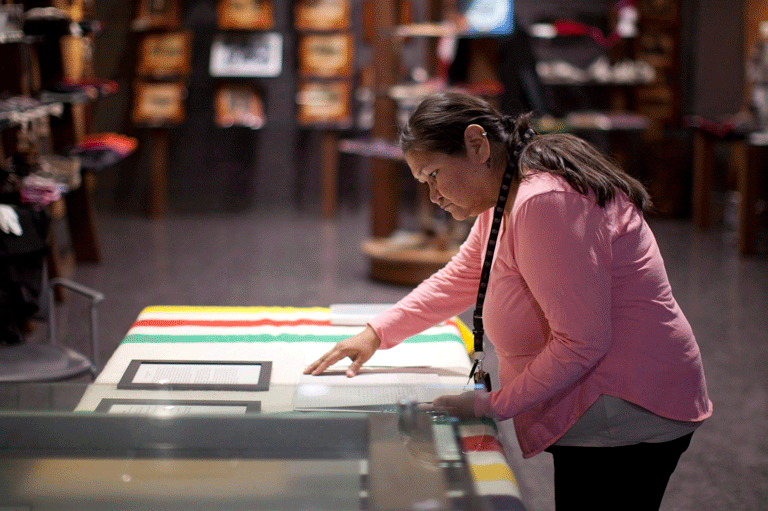
Even at the time of the article, reporters were confused as to whether Latasse was recalling stories from his own observations or from his father’s lifetime.
Other sources record a similar interpretation. Grant Keddie, in his book Songhees Pictorial: A History of the Songhees People as seen by Outsiders, 1790–1912, cites the speech of the Saanich chiefs and councillors to the British Columbia government on April 4, 1932:
“The four Bundles of Blanket was merely for peace purposes…. The Indians fully understood what was said as it was Interpreted by Mr. [Joseph] McKay [HBC negotiator], who spoke the Saanich language very well … Mr. McKay … saying these blankets is not to buy your lands, but to shake hands … in good Harmony and good tumtums (heart). When I got enough of your timber I shall leave in peace.…When James Douglas knew he had enough of our timber he left the place.”
Despite this fundamental difference of interpretation regarding the agreements’ purpose, Douglas and others continued to regard purchasing of land as a precursor to settlement.
The collection Papers Connected with the Indian Land Question, 1850-1875 records Colonial Secretary Sir E.B. Lytton instructing Douglas, in a letter from July 1858, to include “an invariable condition, in all bargains and treaties with the natives for the cession of lands possessed by them, that subsistence should be supplied to them….”
In 1859, Douglas outlined to Lytton his proposed land policy, which envisioned First Nations permanently settled in villages on lands to which they had “a strong attachment” to ensure they would remain there and “be civilized.”
As a protection against encroaching settlers, the First Nations could only sell these lands to the Crown. In his dispatch dated March 31, 1861, Douglas requested a loan of three thousand pounds to buy more lands from the First Nations.
Douglas wrote that such land purchases were a “very necessary precaution” to avoid First Nations’ “feeling of irritation against the settlers and perhaps disaffection to the Government that would endanger the peace of the country.”
However, the colonial secretary refused this request and wrote back to Douglas: “The acquisition of the title is a purely colonial interest, and the Legislature must not entertain any expectation that the British taxpayer will be burthened to supply the funds….”
Lacking funds for land purchases, Douglas implemented his land policy. In a letter dated March 5, 1861, Douglas directed R.C. Moody, chief commissioner of lands and works, to “take measures … for marking out … Indian Reserves … to be defined as they may be severally pointed out by the Natives themselves.”
Douglas issued proclamations 13 and 15 asserting Crown ownership of all lands in British Columbia and stating both that the government had the power to reserve portions of unoccupied Crown lands for Indigenous people and that these lands would be excluded from pre-emption (purchase) by settlers.
First Nations also had the same rights as settlers to purchase Crown land.
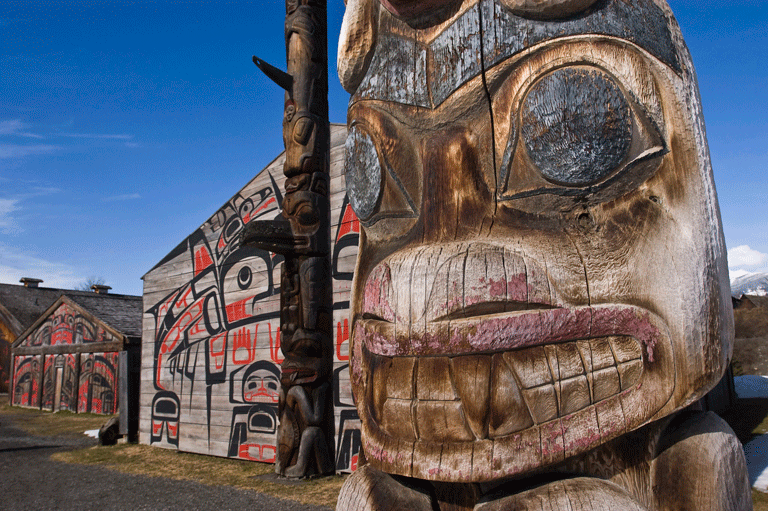
Douglas’s policy was not popular in some quarters, as evidenced by Amor De Cosmos’s editorial column in the Victoria British Colonist newspaper dated March 8, 1861.
De Cosmos wrote, “Indian title … is the great bugbear to stop settlement.” The newspaper editor — who later became British Columbia’s premier — counselled that industrious settlers should create reservations for the “red vagrants” where they can earn their living and said, “if they trespass on white settlers punish them severely … to enable them to form a correct estimate of their own inferiority and settle the Indian title too.” These sentiments reflected many settlers’ viewpoints.
By 1866, the colony of Vancouver Island had amalgamated with the colony of British Columbia and Douglas had been retired for two years. Douglas’s land policy was reversed by people such as Joseph Trutch, chief commissioner of lands and works.
In his 1867 “Report on the Lower Fraser Indian Reserves,” Trutch wrote, “the Indians have no right to the lands they claim, nor are they of any actual value or utility to them; and I cannot see why they should either retain these lands to the prejudice of the … Colony, or be allowed to make a market of them to either the Government or to individuals.”
His policy that First Nations’ reserves established under Douglas were “entirely disproportionate to the numbers or requirements of the Indian Tribes” led to smaller reserves based on ten acres per family and a reduction in existing reserves.
These reductions and adjustments resulted in numerous complaints by First Nations. The Lower Fraser Chiefs wrote to B.C Governor Frederick Seymour in 1868: “Some days ago came new men who … shortened our land … set aside our best land, some of our gardens and gave us in place, some hilly and sandy land, where it is next to impossible to raise any potatoes: our hearts were full of grief day and night ….”
In July 1871, when British Columbia joined Confederation, Trutch was appointed the first Lieutenant-Governor of the new province. Under the terms of union, the Dominion government assumed responsibility for First Nations communities and their lands.
These terms guaranteed that reserve policy was to be “as liberal as that hitherto pursued.” This meant the ten-acre-per-family formula was the rule. The new province of British Columbia maintained that Aboriginal title had been extinguished prior to Confederation.
In the late 1800s, the discovery of gold in northeastern British Columbia led thousands of gold seekers to the area.
This sudden influx created major tensions between the gold miners and the resident First Nations communities. Father René Fumoleau, in his book As Long as this Land Shall Last, includes an excerpt from Major James Walker’s 1897 letter to the minister of the interior and Indian affairs:
“Respecting the necessity of making treaties with the Indians of the Athabasca and the Yukon I would draw your attention to the fact that these Indians have not been treated with.… [I]n the face of this influx of settlers into that country no time should be lost by the Government in making a treaty with these Indians [who are] more easily dealt with now than they would be when their country is overrun with prospectors and valuable mines be discovered.”
In 1899, in order to allow for settlement and to reduce tensions between the miners and First Nations, Treaty 8 was signed by Canada — despite British Columbia’s continued denial of Aboriginal title.
This Treaty covers a land mass of approximately 840,000 kilometres and includes areas of northern Alberta, northwestern Saskatchewan, northeastern British Columbia, and the southwest part of the Northwest Territories. This was the last Treaty to be signed in British Columbia for nearly a century.
p.p1 {margin: 0.0px 0.0px 0.0px 0.0px; text-align: justify; line-height: 14.1px; font: 14.0px 'Adobe Garamond Pro'; color: #00a359}
The Treaty process is not perfect, but neither is it static. It has undergone growing pains as all the parties and the wider public have adjusted to the reality that Treaties take considerable time and resources to conclude, due to their importance and their uniqueness.
Although the Nisga’a Treaty was signed in 1998, its roots stretch back to 1887. In that year, the province formed the Commission to Enquire into the Condition of Indians of the Northwest Coast. The commission travelled to the Nisga’a and Tsimshian territories to hear their grievances.
In his paper “Honouring the Queen’s Flag: A legal and historical perspective on the Nisga’a Treaty,” Hamar Foster, a noted legal scholar, quotes Nisga’a Chief Charles Russ’s comments to the commission: “We took the Queen’s flag and laws to honour them. We never thought when we did that she was taking the land away from us.”
When told that the government could only set up small reserves for the Nisga’a, Russ replied, “It is ours to give to the Queen, and we don’t understand how she could have it to give to us.”
Earlier that year, the Nisga’a chiefs had travelled to Victoria to demand recognition of their Aboriginal title. When the Nisga’a spoke of negotiating a Treaty like those Canada had negotiated with First Nations on the prairies, B.C. Premier William Smithe asked where they had heard this.
John Wesley of the Nisga’a replied that they had read it in a law book. Smithe replied, “There is no such law either English or Dominion that I know of and the Indians or their friends have been misled.”
Throughout the next century, the Nisga’a pursued their land claims, including to the Privy Council in England in 1913, and up to the Supreme Court of Canada in 1973 in the landmark Calder case (named for Nisga’a Chief Frank Calder).
Although the Nisga’a did not get a declaration of Aboriginal title due to a technicality, the Calder case prompted the federal government to develop a land-claims process. Thus, Treaty negotiations with the Nisga’a began in 1976.
In 1990, British Columbia, Canada, and the First Nations of British Columbia created a task force to recommend how Treaty negotiations could begin in the province.
In its 1991 report, the task force recommended that “First Nations, Canada, and British Columbia establish a new relationship based on mutual trust, respect and understanding through political negotiations.” That same year, the BC Treaty Commission was established as an independent body to oversee the process. Formal land negotiations began in 1993.
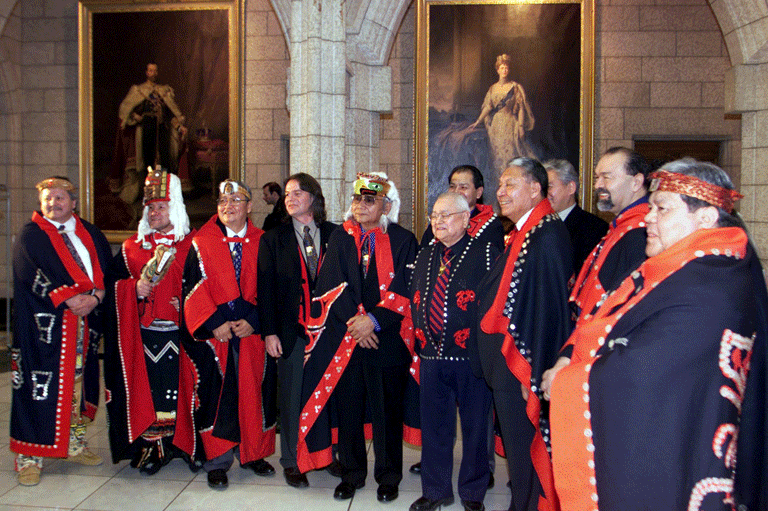
The Treaty process has been slow and expensive. Some First Nations were involved in the Treaty process but have opted out. Their reasons for withdrawing were cited by Robert Morales, chief negotiator for the Hul’qumi’num Treaty Group (HTG), which comprises six thousand members from Cowichan Tribes, Chemainus First Nation, Penelakut Tribe, Halalt First Nation, Lyackson First Nation, and Lake Cowichan First Nation.
Morales stated in a 2006 article, entitled “New Treaty, Same Old Problems,” that “the idea of a Treaty process should be good news for the Hul’qumi’num, but the HTG and many other Indigenous peoples in Canada confront a serious human rights situation: Their very cultural survival depends upon the state fulfilling its duties under domestic and international law to negotiate in good faith, but the state has shown a significant lack of good faith.”
The areas of contention regarding the Treaty process include the huge debts being accumulated by First Nations in order to negotiate Treaties; the fact that privately held lands are not on the table for discussion; the lack of compensation for past wrongs; and the fact that lands and resources continue to be alienated while Treaty negotiations are ongoing.
According to the BC Treaty Commission, only seven First Nations (five Maa-nulth First Nations, Tla’amin Nation, and the Tsawwassen First Nation) have signed final agreements through the B.C. Treaty process as of 2017.
Nearly half of the two hundred “Indian Act” bands in British Columbia are not participating, and the title to related lands remains uncertain. However, to quote the late Chief Joe Mathias, one of the original task force members, “Treaty making is a process, not an event.”
The Treaty process is not perfect, but neither is it static. It has undergone growing pains as all the parties and the wider public have adjusted to the reality that Treaties take considerable time and resources to conclude, due to their importance and their uniqueness.
Some key changes to the process include the introduction of condensed agreements in principle, core Treaties that rely on side agreements to work out further details, and incremental Treaty agreements that provide First Nations and British Columbia with economic benefits from land and resources prior to signing a final agreement.
As well, Canada announced that, starting in 2018, “Indigenous participation in modern Treaty negotiations will be funded through non-repayable contributions.”
The federal government has vowed to work with First Nations to come up with a way to deal with the outstanding loans, something that could include forgiving debts.
These measures and others deal in concrete ways with some of the most troubling issues facing Treaty making in British Columbia.
The political commitment by both Canada and British Columbia to adopt and to implement the United Nations Declaration on the Rights of Indigenous Peoples bolsters the Treaty process. The declaration affirms the rights of Indigenous peoples to self-determination and the protection of their lands, culture, and spiritual practices for future generations.
The BC Treaty Commission eloquently sums up the interplay between Treaties and the declaration, when it says the right “to a deeper connection to traditional territory underlies the importance of self-government to Indigenous rights and is the promise that constitutionally entrenched Treaties have for reconciliation.”
Register to receive your FREE educational package devoted to Treaties and the Treaty Relationship.
Packages are aimed at Grades 2–7 and Grades 7–12, and available in both English and French.
Themes associated with this article
Advertisement
More from the Treaties issue
These articles, as well as the corresponding educational resource package, can be found on the French side of our site.

Encouraging a deeper knowledge of history and Indigenous Peoples in Canada.
The Government of Canada creates opportunities to explore and share Canadian history.

The Winnipeg Foundation — supporting our shared truth and reconciliation journey.




